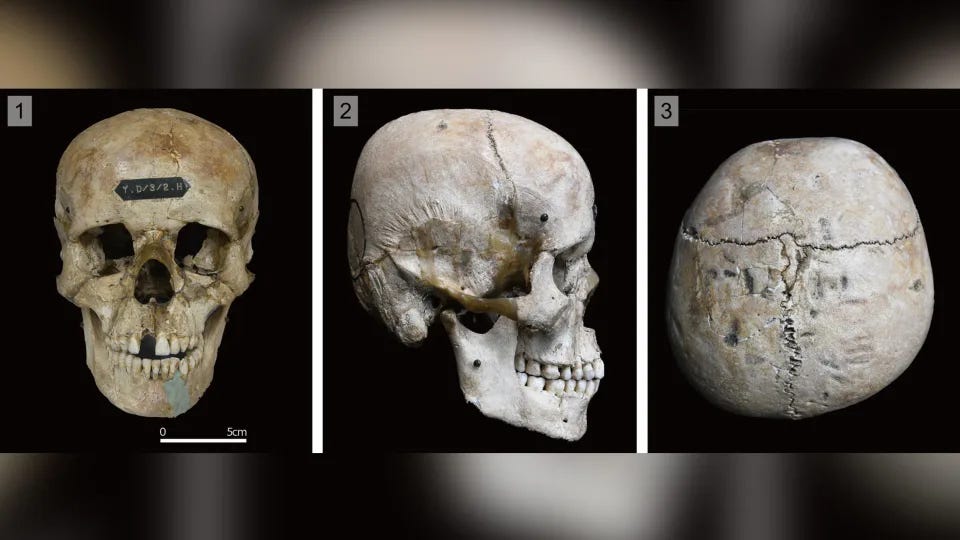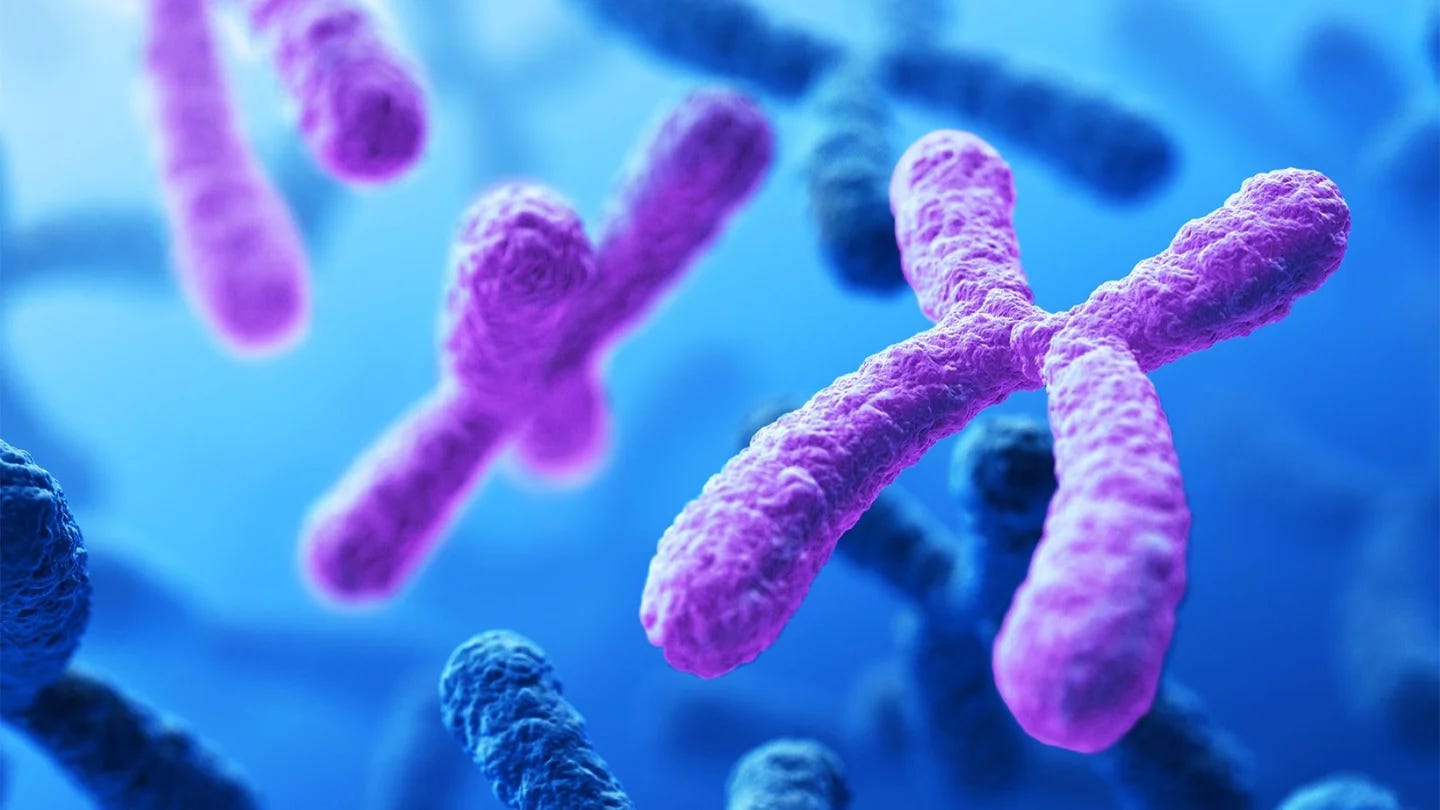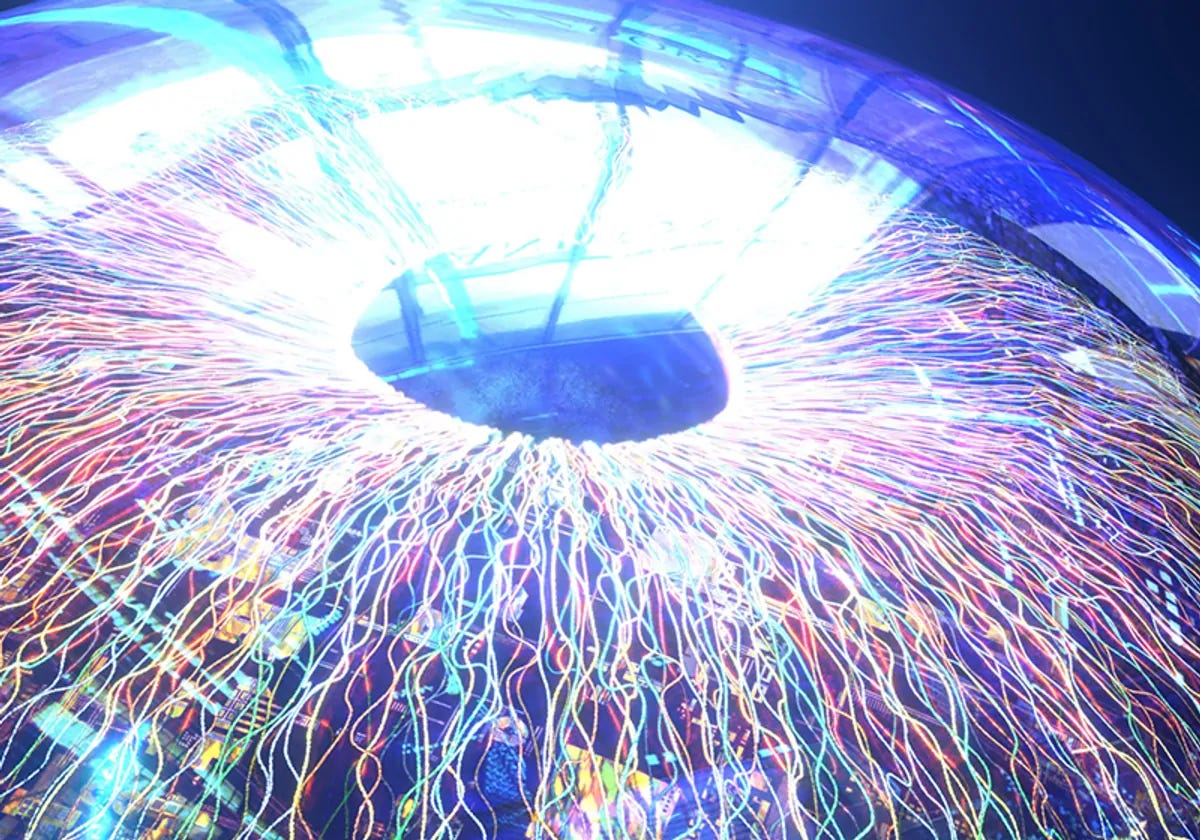Sci-Ed Update 288
Smell gets you in the zone, skull modification in ancient Japan, butyrate for gut health, blood test for childhood fever, corneal T cells, sugars & brain plasticity, genome breakthrough, and more!
How the ‘Proust Effect’ Can Help You Study
Marcel Proust, a 20th-century writer you may already be familiar with, was the man who came up with the term “involuntary memory” to describe being hit with a memory because of a scent, taste, sound, or other sense-based trigger. As a reward for his efforts, he got this effect named after himself.
It’s a real thing that happens to the best of us: A sensory stimuli, like walking by someone wearing the perfume your mom used to wear, can jolt us into a vivid memory of the past. The phenomenon has resulted in a lot of research, because it’s deeply human but also deeply physiological and scientific.
When you search for studying and memory tips, this one comes up a lot. The University of Nebraska Kearney, for instance, recommends using unfamiliar scents as a “brain booster” by spraying a different scent every time you study a unique subject. Before your test in that subject, spray the corresponding scent because, they say, “this can help you recall information.”
Here’s the thing: Involuntary memories are more emotional than they are practical. Research shows that olfactory cues are much more effective at triggering emotional memories than visual cues are. The scent of a spray or the taste of a gum might transport you back to when you were studying, but it’s not guaranteed to help you remember the details of what you were studying so much as make you feel the way you felt when you were doing that.
Kevin Patton comment→ There’s a bit more advice in the full story (click link), which may help some of our students get in their “A&P zone” during a test.
Read more→ AandP.info/ral
Long-standing mystery of modified human skulls in ancient Japan solved by new analysis

Modified skulls found in an ancient burial site in Japan were deliberately reshaped in both men and women as an expression of collective identity. The practice may also have helped the group to forge trade connections, a new study suggests.
In all the skulls, the normally rounded part at the back of the head was flattened and squared off, possibly through binding or being pressed against a flat surface during infancy.
The skulls belonged to individuals from the Hirota people, who lived on the southern Japanese island of Tanegashima from the third century to the seventh century. They were buried at a large grave site that was first excavated in the 1950s and then later in the early 2000s, researchers reported Wednesday in the journal PLOS One. The site held hundreds of skeletons, and 90% of the burials were richly adorned with glass beads and pendants, bracelets and beads made of shell, suggesting that all the burials held people of similar status.
Read more→ AandP.info/gys
This Is the New "It" Food for Gut Health
While many factors can make the difference between a happy gut and one that gives you major digestive drama, probiotics have gotten all the glitz and glory for boosting gut health. But there’s an unsung hero of balancing the gut microbiome that counts benefits such as repairing gut lining, taming gut inflammation, and managing GI symptoms such as bloating, constipation, and diarrhea.
A recent study measured how almonds (yes, almonds!) affect the gut, and found that a reason they were beneficial in improving gut symptoms and gut microbes was because they help to increase a specific microbiota compound called butyrate. Butyrate has been associated with several gut-friendly perks, with some experts even claiming butyrate is more effective than probiotics. So what is butyrate, and just how does it work its magic? Spoiler: The health benefits go beyond just the gut. I asked experts to give a crash course on butyrate, its benefits, and how we can get the most out of it. Gut healing ahead.
Kevin Patton comment→ The full article goes into much more detail.
Read more→ AandP.info/gd9
Researchers develop new blood test for early childhood fever diagnosis

Researchers from Imperial College London have led an international team for the development of a new blood test to easily diagnose childhood fever.
The team has developed and validated a diagnostic method that can simultaneously identify and differentiate between 18 infectious or inflammatory diseases, including tuberculosis, group B Streptococcus and respiratory syncytial virus.
With a single blood sample, the test could help clinicians identify the underlying cause of fever.
This is done by studying the distinct pattern of genes that are being ‘switched on or off’ by the body in response to specific illnesses.
A test utilising this approach could deliver results in less than 60 minutes, while existing tests for certain conditions may require several hours, days, or even weeks.
Read more→ AandP.info/k36
How Bad Is a Suntan, Really?
Q: Is getting a tan just as bad for my health as getting a sunburn? Isn’t it good to get some vitamin D from sun exposure?
Although rates of indoor tanning have been dropping in the United States, many people still try to get a tan outdoors. According to a National Cancer Institute analysis of data from the 2020 National Health Interview Survey, about 39 percent of women and 29 percent of men in the United States had intentionally sought an outdoor tan in the past year.
Yet while bronzed skin may not hurt or peel like a sunburn, it still is not safe, experts say. “If your skin could talk, it would say, ‘Ouch!’ when you get a tan,” Dr. Maral Skelsey, a dermatologist at Georgetown University, said.
In fact, she said, skin bronzes precisely because it has been injured — the extra pigmentation is the skin’s attempt to protect itself from further damage.
Tanning can lead to skin cancer, and more
Sunburns have long been associated with an increased risk for skin cancer, but tanning raises the risk, too, said Dr. Patricia Farris, a dermatologist in Metairie, La.
Tans and sunburns are caused by exposure to two types of ultraviolet rays emitted by the sun. Ultraviolet B rays cause sunburns, and ultraviolet A rays penetrate more deeply and induce tans. Both types of UV rays can cause DNA mutations that raise the risk of cancer, Dr. Farris said.
“When indoor tanning became vogue, they pushed the narrative that tanning could be done safely as long as you don’t burn,” she said. “Almost immediately, dermatologists began seeing younger and younger patients with skin cancers and particularly melanoma.”
Read more→ AandP.info/f0s
Specialized T Cells Patrol Human Cornea
The cornea is akin to a battlefield. Constantly exposed to pathogens, it plays a critical role in protecting the eye from diseases.1 Yet for years, ocular immunologists agreed that the human cornea was only inhabited by innate immune cells like dendritic cells (DCs).2
In a paper published in Proceedings of the National Academy of Sciences, optometrist Holly Chinnery and her colleagues at the University of Melbourne challenged this consensus by reporting the presence of specialized T cells—a type of adaptive immune cells—in the cornea.3 “It really questions some of our fundamental assumptions around the immune cells in the cornea, and that might challenge our thinking more broadly about diseases and therapies as well,” said Chinnery.
The consensus about innate immune cells in the cornea was based on in vivo confocal microscopy (IVCM), the current gold standard static imaging technique.3 However, IVCM has a few limitations, according to Chinnery. To better understand the cornea and its immune cells, Chinnery and her coauthor Laura Downie pioneered a new technique for dynamic corneal imaging: functional in vivo confocal microscopy (Fun-IVCM).
“We can capture the same area of the corneal tissue over time, and we take repeated images over a few minutes in between each image, and then can piece those together to form a time lapse video,” explained Downie.
Unlike traditional IVCM, Fun-IVCM can also capture images at different depths of the tissue. Leveraging this functionality of Fun-IVCM, Downie and Chinnery saw the immune cells moving around through the layers of the cornea, as if patrolling the tissue. This was an unexpected result, since they assumed the cells in question were DCs, which don’t behave that way.
Read more→ AandP.info/3lz
Our Teaching Persona in Anatomy & Physiology Class
In Episode 137, host Kevin Patton explores the significance of playfulness, transparency, and authenticity in the teaching persona.
Drawing from personal experiences training animals, Kevin explains how play is integral to learning, highlighting the importance of incorporating a sense of fun and embracing failures in the classroom. He also emphasizes the value of transparency by sharing our own mistakes and weaknesses, asserting that being open about flaws fosters authenticity and builds trust with students.
By acknowledging vulnerabilities and demonstrating a genuine willingness to learn, educators can create a supportive and engaging learning environment. This thought-provoking discussion reminds us of the power of play and authenticity in effective teaching.
As the new academic year begins, now’s a good time to think about our teaching persona!
To listen to this episode, click on the player (if present) or this link→ theAPprofessor.org/podcast-episode-137.html
Sugars affect brain ‘plasticity,’ helping with learning, memory, recovery

Can you recognize someone you haven’t seen in years, but forget what you had for breakfast yesterday? Our brains constantly rearrange their circuitry to remember familiar faces or learn new skills, but the molecular basis of this process isn’t well understood. Today, scientists report that sulfate groups on complex sugar molecules called glycosaminoglycans (GAGs) affect “plasticity” in the brains of mice. Determining how GAGs function could help us understand how memory and learning work in humans, and provide ways to repair neural connectivity after injuries.
The researchers will present their results today at the fall meeting of the American Chemical Society (ACS). ACS Fall 2023 is a hybrid meeting being held virtually and in-person Aug. 13–17, and features about 12,000 presentations on a wide range of science topics.
The sugars that sweeten fruits, candies or cakes are actually just a few simple varieties of the many types of sugars that exist. When strung together, they can make a wide array of complex sugars. GAGs are formed by then attaching other chemical structures, including sulfate groups.
“If we study the chemistry of GAGs in the brain, we can learn about brain plasticity and hopefully, in the future, use this information to restore or enhance neural connections involved in memory,” says Linda Hsieh-Wilson, Ph.D., the project’s principal investigator presenting the research at the meeting.
Read more→ AandP.info/18e
The final missing piece of the human genome has been decoded

Despite its macho connotations, the Y chromosome is among the tiniest of the 46 chromosomes in the human genome. It makes up only 2 percent of a human cell’s total DNA. But because of its seemingly endless repeating bases, the Y chromosome is one of the most difficult to genetically sequence. Scientists initially believed it was nothing more than a genetic wasteland, only good for making sperm.
Yet, in reality, that’s not the case at all. As genetic technology grows more advanced, so has our understanding of the Y chromosome’s importance. Its loss in older men, for example, is associated with an increased risk of cancer and other chronic diseases. Its genes somehow play a part in multiple biological processes. But, for decades, more than half of the Y chromosome remained unsequenced, and its role in human health remained a mystery.
That age of mystery is ending. For the first time, geneticists have assembled a complete sequence of the Y chromosome. The international Telomere-to-Telomere (T2T) Consortium added data for more than 30 million new base pairs and identified 41 new protein-coding genes. Two studies published today in Nature break down those findings, explaining how this chromosome affects our reproduction, evolution, and even the gut microbiome.
Read more→ AandP.info/08p







